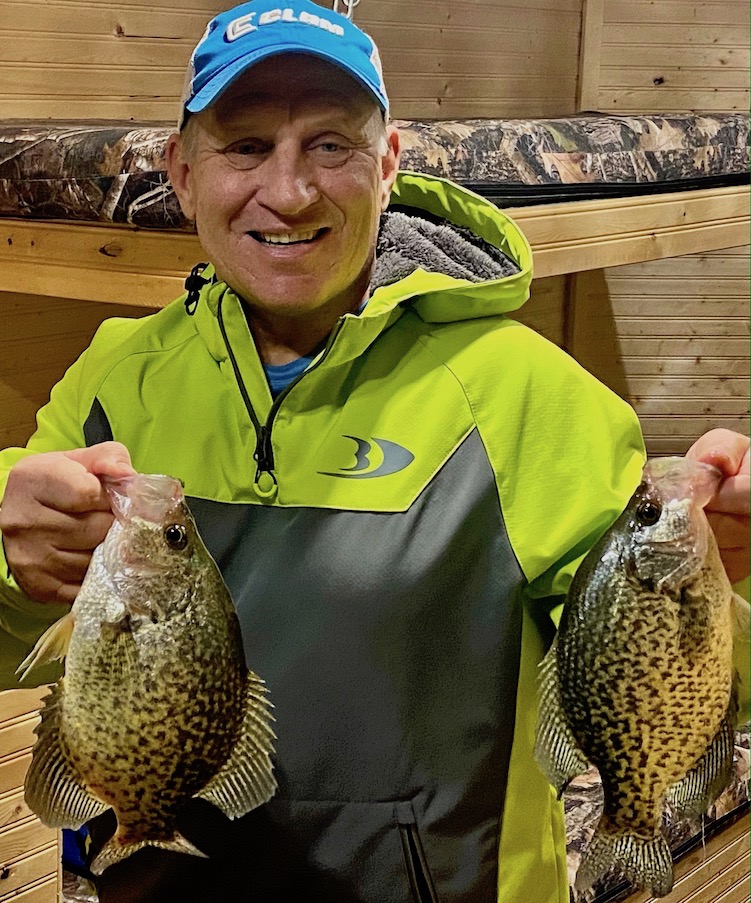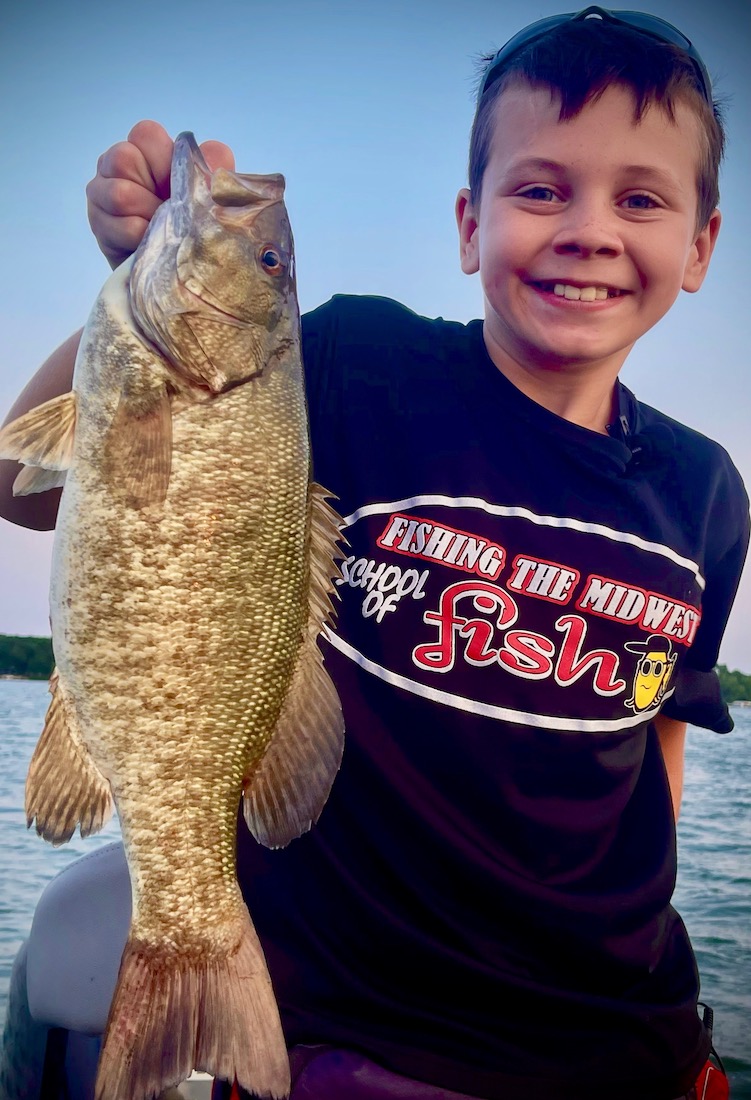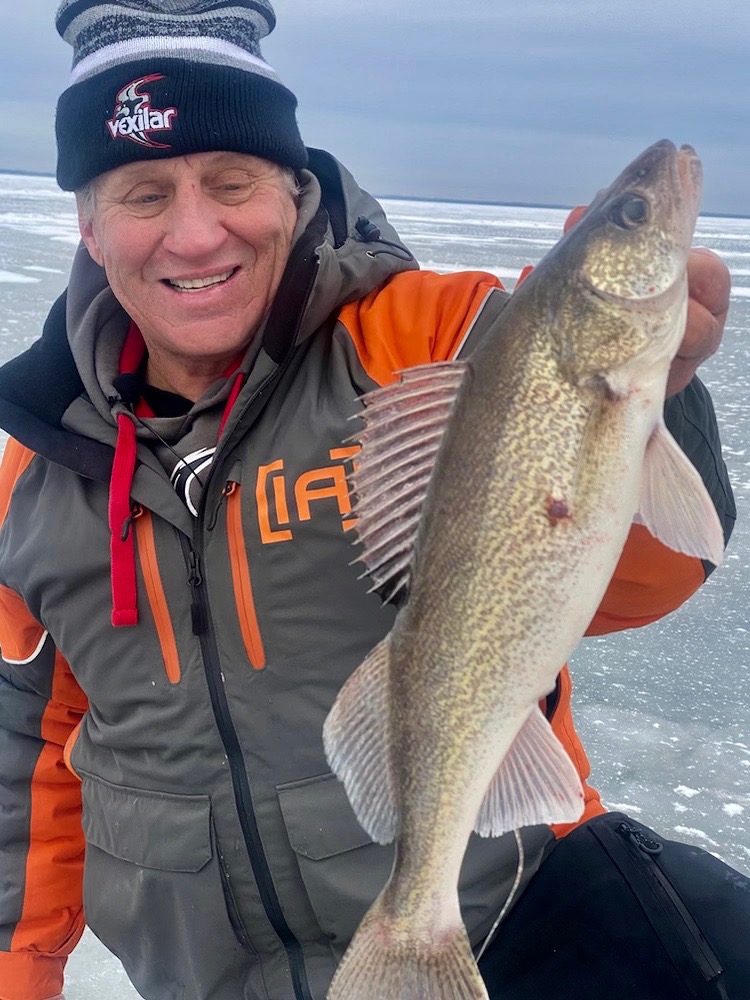News & Stories
The Do Nothing Rig Still Catches 'Em!
Posted by director on December 6, 2021

The do nothing bobber rig catches fish!
By Mike Frisch
Jigging presentations and the various lures used with those presentations get most of the attention when catching fish through the ice is discussed. That attention is certainly deserved as jigging methods and jigging lures certainly catch lots of fish through the ice. The last couple years, however, the importance of minnows presented in a “do nothing” fashion under bobbers has been obvious to this angler and my fishing partners.
The past two winters I have spent lots of hours fishing for winter crappies. Small jigging spoons and tungsten jigs tipped with various baits have certainly been productive. However, as the seasons have progressed, crappie minnows fished on small, plain hooks have produced better than jigs and spoons most trips.
As winter progresses, the crappies that are left have not only seen a variety of jigged lures but are also those that are a bit more wary and often require more subtle, natural appearances to trigger a bite. Those fish are the ones that can, at least at times, be tempted into eating a minnow presented on a hook.
Additionally, last winter on a trip to Red Lake where walleyes were the target, spoons and glide baits jigged aggressively produced many fish. However, some fish, particularly several during the middle of the day, were caught on minnows fished below bobbers.
These mid-day walleyes, like the mid-winter crappies, weren’t as aggressive and so jigs were less appealing. Nevertheless, minnows struggling in their faces were a bit too tempting for some, even when the walleyes weren’t actively feeding.
While bobbers fished for crappies and walleyes are often considered “do nothing” rigs, there are some things that make these simple presentations more appealing to the fish and even more effective.
First, both small jigs and plain hooks with split shot weights added above work for presenting minnows below bobbers. For me, I often favor a plain hook as I think this is the ultimate in a subtle, natural presentation.
Also, when baiting minnows on those hooks, I prefer lightly impaling the hook under the skin and behind the bait’s dorsal fin. A lightly hooked minnow will stay lively and swim better which is often more appealing to the fish.
Even when a minnow does swim well, I still like to change it out regularly as a “tired” minnow may not be as appealing to the fish as a fresh, more lively offering is.
Finally, the use of the right bobber is important. I prefer using Ice Buster Bobbers. These feature a “slip bobber” design which works great for precisely presenting a bait at a chosen depth and they make fish landing easy too. Plus, the Ice Busters can be trimmed so that they barely float and are super sensitive. A barely floating bobber is a better fish catcher because it easily slides under the water making it less prone to spook a wary fish than it’s bigger, more buoyant counterpart is.
If catching more fish is your goal this winter, don’t forget to add a “do nothing” bobber line to your arsenal utilizing some of the suggestions just offered. Some days that addition will add a fish or two to your catch, while on others it might mean the difference between a few fish and no fish!
As always, good luck on the ice and remember to include a youngster in your next outdoors adventure.
Mike Frisch hosts the popular Fishing the Midwest TV series. Visit www.fishingthemidwest.com for more “fishy” stuff.
School of Fish completes 9th year!
Posted by director on November 30, 2021

Elbow Lake (MN)—11/30/2021--**for immediate release
School of Fish presented by Hannay’s Marine has another successful year!
School of Fish presented by Hannay’s Marine, widely recognized as leaders in kids fishing education, recently completed their 9th year of hosting fishing classes for kids, their parents, and other adults. School of Fish taught 22 Schools in 2021 graduating 489 “water-ready” kids and had 242 adults attend as well!
“We went to some new destinations this year, but also returned to communities we’ve been to many times,” said Mike Frisch, one of the organization’s co-founders. “We think it speaks well of our program when schools and other organizations have us back year after year!”
Started in Alexandria, MN in 2013, School of Fish presented by Hannay’s Marine has now taught 239 Schools in Minnesota, Iowa, Wisconsin, North & South Dakota, Nebraska and has graduated 5,119 kids in its classes. Nearly 1,700 adults have attended in its existence as well.
“We continue to graduate water-ready kids who have the knowledge, skills, and equipment they need to get their fishing careers started,” stated Frisch. “Just as importantly, we provide that education in a fashion that excites them about our sport!”
Frisch also lauded the program’s sponsors in helping grow School of Fish. “Many of our supporters have been with us from day one and they continue to see great value in exposing kids and their families to fishing and the great outdoors. Their awesome support allows us to provide quality education and the rods, reels, and tackle needed to help our students get their fishing careers off to great starts,” Frisch concluded.
In addition to Hannay’s Marine as the presenting sponsor, other School of Fish supporters include G3 Boats, Soderholm Insurance, KLN Family Brands, ShoreMaster, Clam, Women Anglers of Minnesota, Strike King, Lew’s, Diamond Buick GMC, Distinctive Cabinet Design, Artie’s Bait and Tackle, and Fishing the Midwest.
To learn more about School of Fish visit fishingthemidwest.com and select the “School of Fish” icon to be directed to the webpage. Once there, visitors can see the upcoming schedule and learn more about the program.
School of Fish is currently scheduling 2021 classes. Contact schooloffish@outlook.com for more information.
Photo – School of Fish graduate Lincoln Hoaglund with a big smallmouth bass he caught last summer.
Spoons for Walleyes!
Posted by director on November 26, 2021

WALLEYES ON SPOONS THROUGH THE ICE
by Bob Jensen
Walleyes will respond to a number of different lure types under the ice, but they especially like to eat spoons. There are a bunch of different types of spoons available to walleye anglers. Although they may look similar, there are some differences, and there are a few things you should consider when you’re deciding what spoon to tie onto the end of your line. Here are some of those considerations.
Consider water clarity. In cloudy water where the fish can’t see as far, a noisy spoon like a Rattlin’ Blade Spoon will get the walleye’s attention. The rattling noise coming from the spoon will help walleyes find the bait easier when their sight is limited.
In clear water the rattling noise isn’t as necessary, but it still doesn’t hurt. However, if you’re fishing clear water and see fish on your sonar come in and look at your lure but not eat it, and if you’re using a rattling lure, switch to a spoon that doesn’t rattle. A quiet lure, at times, will be more productive, especially in clear water.
Consider the color of the spoon. Again, clear or cloudy water will have a bearing on what color to start with. Clear water: Something natural in appearance.
Cloudy water: Go with something brighter, something that will be more visible in limited visibility conditions. If you have a “glow” lure, give it a flash of light and put it down there. I’ve seen lots of times when a “glow” lure out-produced anything else.
And, again, if the fish are looking but not eating, try something else. Sometimes bright lures perform very well in clear water.
If you’re fishing walleyes that have been getting a lot of fishing pressure, try something way different. Fish become conditioned to a particular presentation. If everyone is doing the same thing and it’s not working, try something else.
Think about the physical size of your lure. In stained water a larger spoon will be easier to see, so a large lure will often be more productive.
When the fish are finicky, a spoon that’s smaller in appearance will often be better.
Sometimes a spoon that has more action as it falls will be more appealing to walleyes and any other fish that might be in the area. This is where a spoon like the Leech Flutter Spoon excels. It’s made of zinc, it’s very thin, and it has a unique flutter as it falls.
Also consider the line you’re using. In deep water a no-stretch line will provide outstanding sensitivity and hooksets. However, no-stretch lines are more visible, and some anglers think that the added visibility can spook the fish. For that reason, they tie a small swivel to the end of the no-stretch line, then tie twelve to twenty inches of monofilament or fluorocarbon to the other end of the swivel. To the other end of the mono or fluoro a small snap is attached. Your spoon is attached to the snap. With this rigging you have outstanding feel, hooksets, and invisibility. The swivel also prevents line twist.
Something that adds taste and smell is usually hung on the spoon. A piece of a minnow will almost always get more walleyes to eat your spoon.
Spoons catch walleyes and a variety of other fish as well. Give them a try this winter. If there are fish in the area, and if those fish are even a little interested in eating, show them a spoon. A spoon with hooks on it.
Photo Caption—Spoons are great walleye baits, but Kyle Thomsen catches lots of largemouth bass on spoons also.
